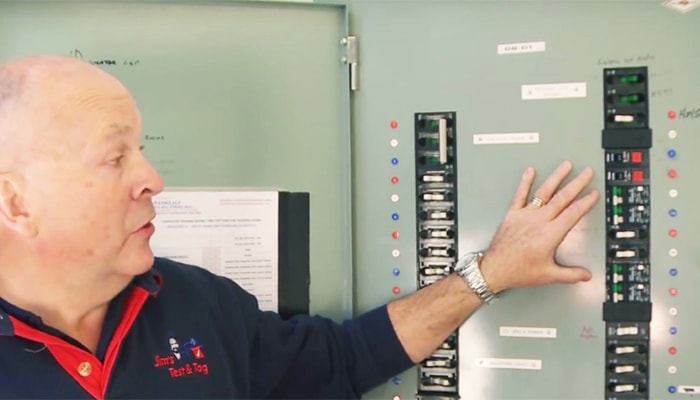Electrical safety is crucial for everyone; whether you are a businessman who owns real estate, a tenant, or a homeowner. It is not only a moral responsibility, but the law also dictates the importance of electrical safety and people that don’t follow proper electrical safety standards are liable to a considerably large fine (and even jail time in specific scenarios).

Although standardized tests are not legally necessary, however, they are the best ways to confirm the electrical safety of any building. Following are five basic (and useful) standardized electrical tests that you must invest in, to assure the safety of your property:
- Test & Tag
- PAT
- Earth Testing
- Resistance Testing
- RCD testing
Test & Tag
‘Testing and tagging’ is one of the most commonly employed and considerably thorough electrical inspection techniques. As the name suggests, every electrical equipment is first tested and then tagged (i.e., its inspection is documented).
It is usually done by professional electrical services or an experienced electrician. These tests are conducted according to different electrical safety standards depending upon the state your property is in.
Following are some of the basic tests that are carried out under the umbrella of testing and tagging:
- Visual inspection of electrical equipment
- Leakage tests
- Insulation resistance tests
- Earth continuity tests
‘Testing and tagging’ does not consist of a set number of tests that must be carried out on every electrical appliance inside the building. Instead, the process varies with the environment and the type of electrical devices present.
Portable Appliance Test
As the name suggests, a portable appliance test (commonly known as pat) is a standardized electrical appliance safety test conducted on portable electrical appliances. It is used domestically as well as commercially. Commercial cleaners also make use of it extensively. One of the most essential inspections in pat is the leakage current test which is used to confirm that all appliances are properly insulated.
Drills, steam cleaners, angle grinders and other portable electrical appliances used in both homes and offices are subjected to PAT.
EARTH Testing
Earth testing is an important electrical testing process, essentially because it is also a legal requirement. Earth testing deals with Class 1 electrical appliances (Earthed Appliances) that are also the most dangerous electrical appliances; these include Bench Grinders, Microwave Ovens, etc.
These types of appliances are grounded; meaning that they are connected to the Earth with the help of an Earth conductor. The Earth conductor goes straight back into the switchboard of the property after which it goes into the ground. If the conductor gets damaged, drastic consequences can follow. Therefore, Earth testing is crucial in determining the electrical safety of any building.
Resistance Test
Insulation resistance testing is another crucial electrical safety test that you need to perform in your building. In resistance tests, specially designed testers are used that subject electrical appliance under 500 (or more) volts. The high voltage places the insulation of the appliance under stress. Resistance tests are used to find out any weakness in the insulation under stress that might cause danger during normal use.
RCD testing
RCD testing deals with the tripping mechanism of your electrical appliances. RCD is designed to trip all power to a particular circuit during short circuits. RCD test determines the time an appliance takes to trip in case of an electric incident. The faster an appliance trips, the less damage the person has to bear.
